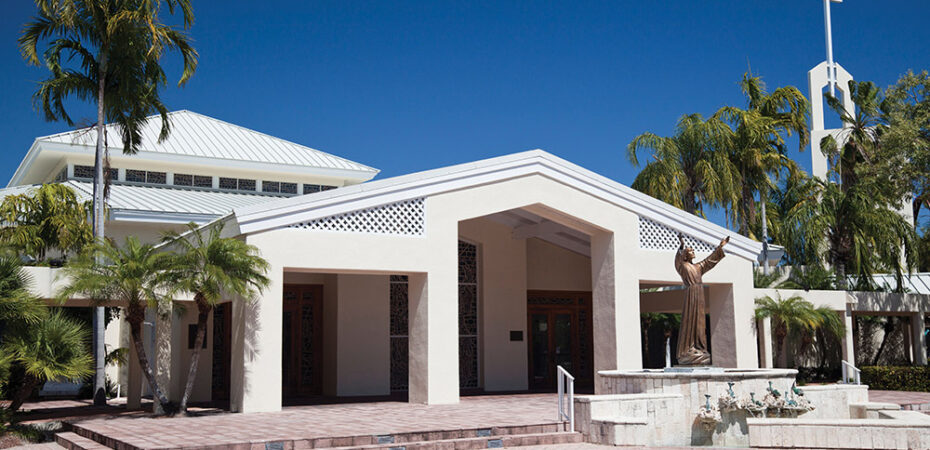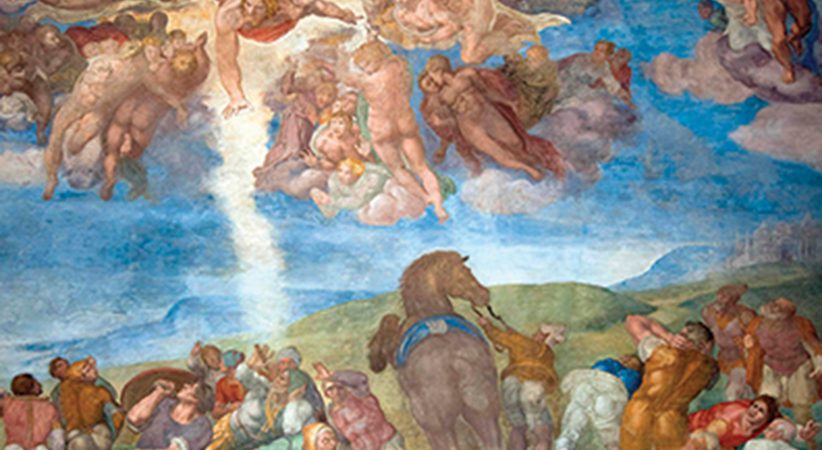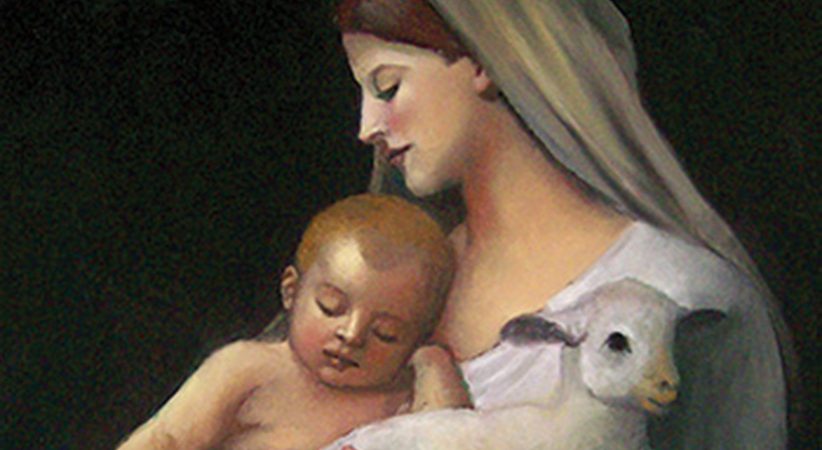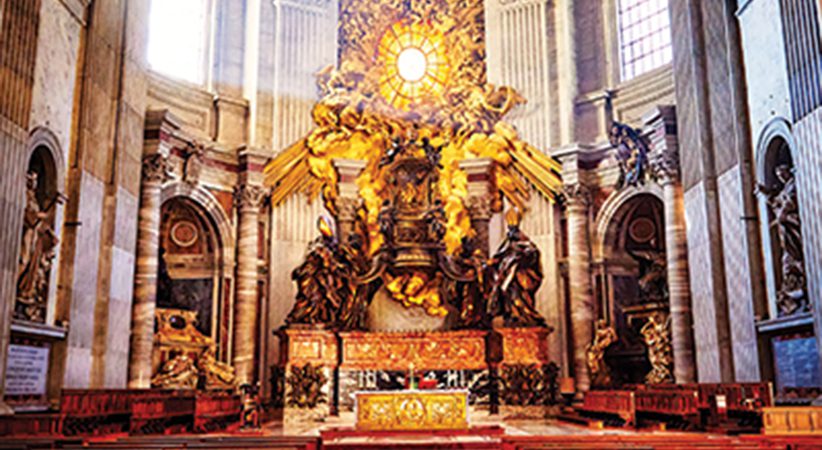A Man for All Seasons: Father Jan Januszewski
The remarkable ministry of a priest who served from Dachau to Florida
Richard C. Lukas Comments Off on A Man for All Seasons: Father Jan Januszewski
Twenty years after I had interviewed Father Jan Januszewski for a book I was writing on Polish survivors of the German occupation of Poland, I visited St. Justin the Martyr, the church that he had pastored for many years in Key Largo, Florida.
When I entered the vestibule of the church, I saw his photograph hanging on the wall, walked over to it and stared thoughtfully, vividly remembering my interview with this remarkable priest.
“Did you know him?” a frail, older lady asked me as she pointed to the photograph.
“Yes, I did,” I replied. “I had the privilege of knowing him very well for many years.”
“You were very fortunate,” the lady said as tears welled up in her eyes. “He was one of a kind. He was everything a priest should be.”
“I agree,” I said as I choked back tears.
A Special Man and Priest
I met Father Jan in the 1950s when I came home during a summer break from college. My mother had worked tirelessly to convince the local bishop to sponsor several Polish priests who lived in displaced persons camps in Western Europe after World War II.
Florida, burgeoning with the influx of new residents after the war, needed additional priests to serve in parishes established to serve the flood of Catholics coming into the state, which was second only to California in total numbers during this postwar immigration. Father Jan Januszewski was one of the priests who served in what was then the Diocese of Miami. His last pastorate was at St. Justin the Martyr.
From the moment I met him, I realized I was in the presence of a special man and priest. Tall, lean and intelligent, Father Jan had eyes that revealed his conquest of a great deal of pain in his life. He was a quiet, gentle man who possessed an enviable serenity that reflected his enormous faith. He was content, satisfied with his long, difficult journey that took him from the Dachau Concentration Camp in Germany to the United States, where he could freely practice his beloved priestly vocation.
Invasion of Poland
Father Jan was a young priest in a small Polish village when the Germans invaded Poland on September 1, 1939. Within a few weeks of the invasion, German authorities forced the poor villagers of Father Jan’s parish to pay the Germans “restitution” for the sufferings of the German people. The villagers complied and were left destitute. This was only the beginning of the horrible ordeal that this priest and his parishioners would experience during the war.
Two months later, the German police arrested and jailed Father Jan for no reason other than the fact that he was a Roman Catholic priest. Other Poles, including farmers, businessmen and priests were jailed as well.
Father Jan, who believed he would be a target for execution, prayed during his confinement for himself and the hundreds of other Poles who had been jailed with him. The Germans decided to execute 12 of the prisoners and release the others. Apparently, German authorities believed that they had murdered enough Poles as an example to other Polish citizens who they believe would now comply with the new German order.
Father Jan wisely understood that it was only a matter of time before the Germans would escalate their policy of repression and terror. In February 1940, the chief of the German police summoned Father Jan to his office and told him that the authority of the Catholic Church in Poland had been eliminated. That meant that he, along with other Polish priests, had to vacate their positions in Polish churches.
Astonished by what he had heard, Father Jan related, “I told them that I had taken an oath to fulfill my duties as a priest.”
Dismayed by this response, the German official angrily replied, “Then you will be sent to a concentration camp!”
Courage to Continue
Father Jan was as good as his word. He returned to his parish and resumed saying Mass, hearing confessions, baptizing babies and performing marriage ceremonies. Keenly aware that German authorities would not allow him to defy them much longer, he constantly prayed that the outcome for him and his parish family would not be as harsh as he imagined. After all, he and the people of his village were well aware that the German policy of repression and terror was being implemented throughout German-occupied Poland in the form of beatings, hangings, shootings and deportations to concentration camps.
“I did not leave as I was told by the Germans,” Father Jan said. “My bishop told me to serve the people of my church. I wanted to stay.”
The friendly warnings of Polish citizens of German heritage, many of whom were members of his congregation, did not deter this courageous priest from continuing his priestly duties. He even ignored the warning of the German mother of the village mayor who told him about his impending arrest.
Finally, the day he anticipated had come. While Father Jan was at the altar saying Mass, German police officers burst through the wooden doors of the quaint old church, ran up to the altar and grabbed him by his vestments. To the horror of his parishioners, they helplessly watched as the Germans dragged their priest into a waiting car. On Father Jan’s way down the aisle, one of his acolytes, who had been involved in minor scrapes before the war, fearlessly accompanied him.
“Father,” the young boy said, “Christ suffered; now you will suffer, too!” The boy’s words boosted Father Jan’s spirits. “If the remark had come from someone else who had been particularly religious, it would not have had the impact that it did coming from this young man,” Father Jan said to me.
The Germans sent Father Jan to Dachau Concentration Camp, located northeast of the medieval town by the same name. Established by the Nazis in 1933, the year Adolf Hitler came to power, Dachau originally served as a prison for political opponents of the Nazis. Over time, Dachau developed scores of sub-camps and became a prototype for other Nazi concentration camps. As many as 200,000 unfortunate people passed through this infamous place.
By 1940, the largest ethnic group that inhabited Dachau were Poles. Of 2,720 clergy arrested and sent to Dachau, 2,579 were Catholic priests, who were treated especially harshly. Routine beatings, malnutrition, disease and executions were daily companions of Dachau’s inmates. A large number of priests, some of whom Father Jan had known, were used for medical experiments and died.
Being young and healthy, Father Jan was assigned to work in a quarry in one of Dachau’s sub-camps. He worked alongside an elderly Jewish man who was unable to meet his daily quota of filling his wheelbarrow with rocks from the quarry. Seeing that the man was at the point of complete exhaustion, Father Jan urged him to hide behind some nearby trees while he completed the man’s quota. That act inevitably saved the life of the Jewish man.
When I asked Father Jan how he was able to cope with the horrific conditions at Dachau, his terse reply summed up the remarkable man that he was. “I was able to cope with concentration camp life because I had no sense of guilt for anything,” he said.
That was his last comment to me. Reliving his years at Dachau during our interview took an emotional toll on him. His eyes filled with tears. He cupped his face in his hands and wept.
It was time for me to leave. After I thanked him for sharing his wartime experiences with me, he looked up at me and said, “There isn’t a single day that passes that I forget to pray for all of the people I met and knew at Dachau.”
A Blessing
Quite spontaneously, I asked for a blessing from this good and holy man. “God bless you, Richard,” he said while he made the Sign of the Cross over me. “The world knows what happened to our Jewish brothers and sisters,” he added. “But few people are aware of what the Polish people experienced at the hands of the Nazis. I bless you and your work.”
As I left the rectory, I felt that I had experienced the rare privilege of being in the presence of genuine holiness.
I never saw Father Jan again. He was 75 years old when he died in 1987.
RICHARD LUKAS is a retired historian and the author of nine books and multiple articles.
…………………………………………………………………………………………………………………………………………….
Martyrdom of St. Maximilian Kolbe
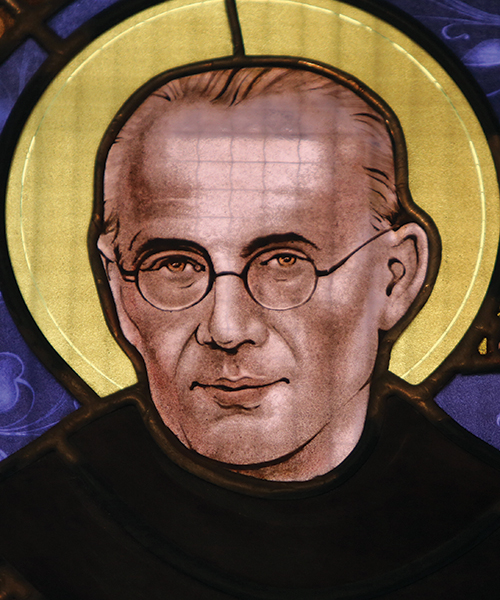
St. Maximilian Kolbe was a Polish priest who lost his life at Auschwitz concentration camp in Poland on Aug. 14, 1941. After the Nazis invaded Poland in 1939, several friars, including Father Kolbe, were arrested for their activities in media evangelization. But they were later released. Father Kolbe was arrested a second time in February 1941 and ordered to the concentration camp.
In July 1941, a prisoner escaped Father Kolbe’s barracks. In retaliation, the Nazis chose 10 prisoners to starve to death. One of the 10 cried out that his family would be left without a father, and Father Kolbe stepped forward and offered to take the man’s place.
Father Kolbe was placed in the starvation chamber with the other nine men. He spent his last two weeks encouraging the others, praying with them and singing hymns. On Aug. 14, Father Kolbe was one of four prisoners still alive. His captors killed him by means of a lethal injection of carbolic acid and then burned his body. His feast day is Aug. 14.
………………………………………………………………………………………………………………………………………………..

